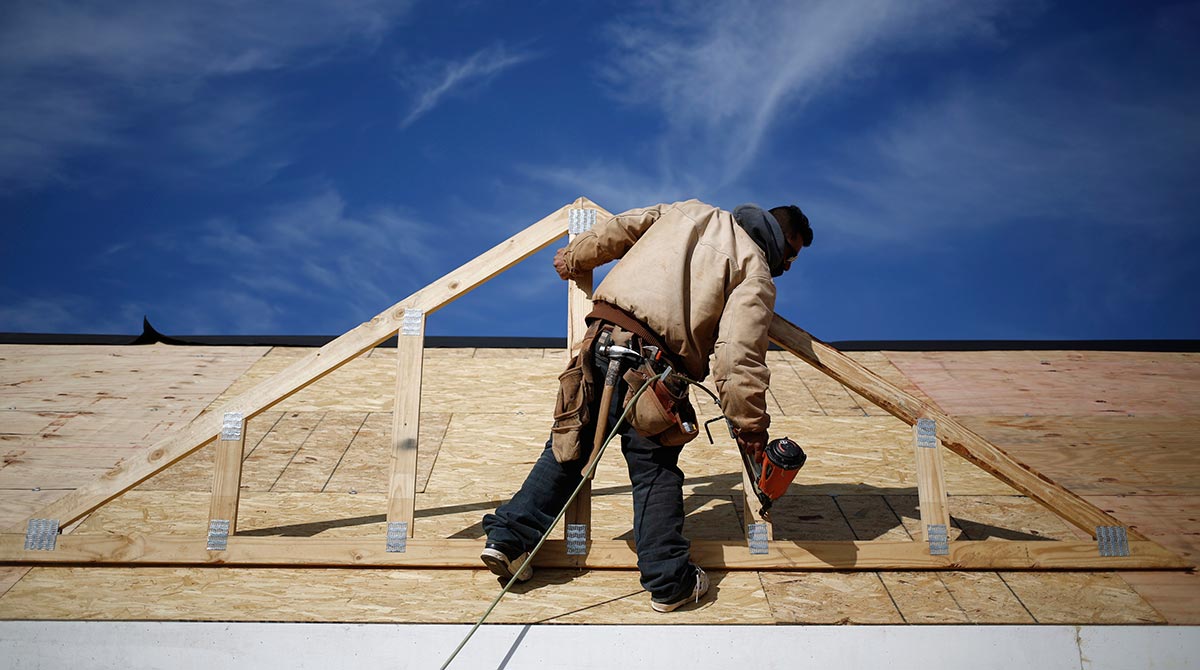Sales of New Homes Rise to Highest Level in Seven Years

Purchases of new homes in the United States rose in May to the highest level in seven years, signaling the industry is gaining momentum heading toward the second half of the year.
Sales climbed 2.2% to a 546,000 annualized pace, exceeding all forecasts in a Bloomberg News survey of economists and the most since February 2008, Commerce Department data showed June 23. Readings for February through April were revised up.
Stronger employment and income prospects are bolstering would-be home buyers, allowing them to take advantage of relatively cheap borrowing costs. The pickup in demand points to gains in construction of residential real estate that will contribute to gross domestic product for the rest of the year.
“Look for significant increases in housing starts — we have to catch up to these demand numbers,” said Aneta Markowska, chief U.S. economist at Societe Generale in New York, whose forecast for 540,000 sales was among the closest in the Bloomberg survey. “This could be the best year for housing in terms of how much it contributes to GDP since 2012.”
The median forecast of 71 economists surveyed by Bloomberg called for the pace to accelerate to 523,000. Estimates ranged from 499,000 to 545,000. The Commerce Department revised the April reading up to a 534,000 pace from a previously estimated 517,000.
The Commerce Department’s report on new-home sales showed the median sales price declined 1% from May 2014 to $282,800, the report showed.
The increase in demand last month was led by an 87.5% surge in the Northeast, the biggest gain since July 2012. The West climbed 13.1%, while sales fell in the Midwest and South. The setback in the South could have been caused by the floods that inundated parts of Texas last month.
The supply of homes at the current sales pace declined to 4.5 months from 4.6 months in April. There were 206,000 new houses on the market at the end of May, the same as in the prior month.
New-home sales, which account for almost 10% of the residential market, are tabulated when contracts are signed. That makes them a timelier barometer than transactions on existing homes.
Previously owned home purchases rose in May to their fastest pace since November 2009, National Association of Realtors data showed June 22. Closings increased 5.1% to a 5.35 million annualized rate as the share of sales to first-time buyers matched the strongest level since September 2012.
The housing industry has shown gradual gains in the second quarter after the world’s largest economy slumped in the first three months of the year.
While housing starts declined 11.1% in May to a 1.04 million annualized rate, that followed a revised 1.17 million pace in April to cap the best back-to-back readings since late 2007, Commerce Department figures showed last week. Permits for future projects rose to the highest level in almost eight years.
Homebuilders are feeling better about the outlook for sales. The National Association of Home Builders/Wells Fargo builder sentiment gauge rose to 59 this month, the strongest since September and exceeding all projections in a Bloomberg survey, from 54 in May.
“With housing markets continuing to recover, we are experiencing high levels of demand,” CEO Jeffrey Mezger said on a June 19 earnings call. “Inventory levels remain well below normal, and while there is still price appreciation occurring in most markets, it is at a more moderate and sustainable pace.”
Relatively low borrowing costs are still supporting would-be buyers who can qualify for credit. The average rate for a 30-year fixed mortgage was 4% in the week ended June 18, according to data from McLean, Virginia-based Freddie Mac. While that’s the second-highest rate this year, it’s still well below the 6.06% average from 2003 to 2007, when home sales boomed.
“Housing overall, given the still-low level of mortgage rates, remains quite affordable,” Fed Chair Janet Yellen said in a June 17 press conference after the policy makers’ two-day meeting in Washington. At the same time, “anyone who doesn’t have a pristine credit rating finds it very difficult at this point to qualify for a mortgage.”
The central bankers decided at their June meeting to keep the benchmark interest rate near zero, where it’s been since 2008. Most economists surveyed by Bloomberg project the Fed will announce its first rate increase in nine years in September.


